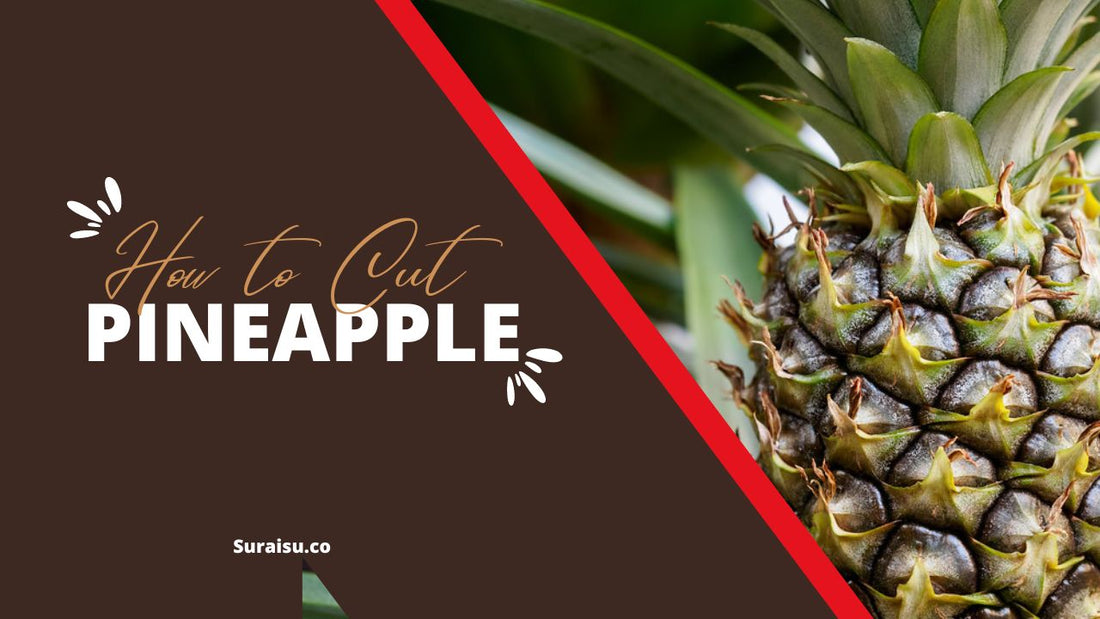As a home chef, mastering the art of preparing fresh ingredients is crucial to elevating your culinary creations. Today, we're diving into the world of pineapples - those spiky, tropical fruits that add a burst of sweetness to both savory and sweet dishes. In this comprehensive guide, we'll walk you through the process of cutting a pineapple like a pro, share tips on selecting the perfect fruit, and even explain why pineapples sometimes make your tongue tingle.
How to Pick a Perfect Pineapple
Before we get into the cutting technique, let's start with choosing the right pineapple. Here's what to look for:
- Color: A ripe pineapple should have a golden-yellow color. Some green is okay, but avoid pineapples that are predominantly green or have brown, mushy spots.
- Smell: Give the base of the pineapple a sniff. It should have a sweet, fragrant aroma. If there's no smell or it smells fermented, move on to the next one.
- Firmness: The pineapple should feel firm but have a slight give when you squeeze it gently. If it's rock hard, it's not ripe enough; if it's too soft, it's overripe.
- Leaves: Look for fresh, green leaves. Avoid pineapples with brown, dry, or wilted leaves.
- Size: Bigger doesn't always mean better. Choose a pineapple that feels heavy for its size, as this indicates juiciness.
Tools You'll Need
- A sharp chef's knife
- A cutting board
- A small paring knife or specialized pineapple corer (optional)
Step-by-Step Guide to Cutting a Pineapple

Now that you've selected your perfect pineapple, let's get cutting!
- Wash the pineapple: Even though you won't eat the skin, it's a good practice to wash the fruit to avoid transferring dirt or bacteria to the flesh.
- Remove the crown: Lay the pineapple on its side and slice off the leafy top about half an inch below the leaves.
- Cut off the bottom: Flip the pineapple and slice off about half an inch from the bottom to create a stable base.
- Remove the skin: Stand the pineapple upright. Using your chef's knife, slice downward, following the curve of the fruit, to remove the skin in strips. Don't cut too deeply; you want to preserve as much flesh as possible.
- How to Deal with the eyes of pineapple: After removing the skin, you'll notice brown spots called "eyes" embedded in the flesh. There are two ways to remove these: a) The spiral method: Examine the pineapple and you'll notice the eyes form a spiral pattern. Cut a V-shaped groove along this spiral to remove the eyes in one continuous strip. b) Individual removal: Use a small paring knife or the tip of a peeler to dig out each eye individually. This method preserves more flesh but takes more time.
- Quarter the pineapple: Cut the pineapple in half lengthwise, then cut each half into quarters.
- Remove the core: Each quarter will have a strip of tough core along one edge. Slice this off at an angle.
- Slice or dice: You can now cut the pineapple quarters into your desired shape - slices, chunks, or small dices.
Pro Tips for Pineapple Preparation
- Save the core: While too tough to eat, the core can be used to infuse water or cocktails with a delicious pineapple flavor.
- Use the right knife: A sharp, serrated knife can make cutting through the tough skin easier.
- Chill before cutting: If you're planning to use the pineapple in a fruit salad or as a garnish, chill it in the refrigerator before cutting. This will make the flesh firmer and easier to cut cleanly.
- Don't waste the juice: Place your cutting board inside a rimmed baking sheet to catch all the delicious juice as you cut.
Why Does Pineapple Make Your Tongue Tingle?

If you've ever experienced a burning or tingling sensation on your tongue after eating pineapple, you're not alone. This phenomenon is due to an enzyme called bromelain, which is found in pineapples, particularly in the stem and core.
Bromelain is a mixture of enzymes that can break down proteins. When you eat pineapple, the bromelain begins to work on the proteins in your mouth, including those on your tongue. This can cause that tingling, sometimes uncomfortable sensation.
Interestingly, while bromelain is breaking down the proteins in your mouth, you're also breaking down the bromelain as you chew and digest the pineapple. This is why the sensation is usually temporary.
Some people are more sensitive to this effect than others. If you find it particularly bothersome, try these tips:
- Eat pineapple with other foods to dilute the enzyme's effects.
- Cook the pineapple, which denatures the enzyme (though this will change the fruit's texture and flavor).
- Cut the pineapple and let it sit in the refrigerator for a few hours before eating. The enzymes will begin to break down, reducing their effect on your mouth.
Conclusion
Cutting a pineapple is a valuable skill for any home chef. Not only does it allow you to enjoy this tropical fruit at its freshest, but it also opens up a world of culinary possibilities. From grilling pineapple rings for a summer barbecue to creating a show-stopping fruit platter, your perfectly cut pineapple will elevate any dish.
Remember, practice makes perfect. Don't be discouraged if your first attempt isn't Instagram-worthy. With each pineapple you prepare, you'll become more efficient and skilled. Before you know it, you'll be cutting pineapples like a pro, impressing your family and friends with your knife skills and delicious, fresh pineapple creations.
So go ahead, pick up a pineapple on your next grocery run, and put your new knowledge to the test. Your taste buds (and maybe your slightly tingly tongue) will thank you!

